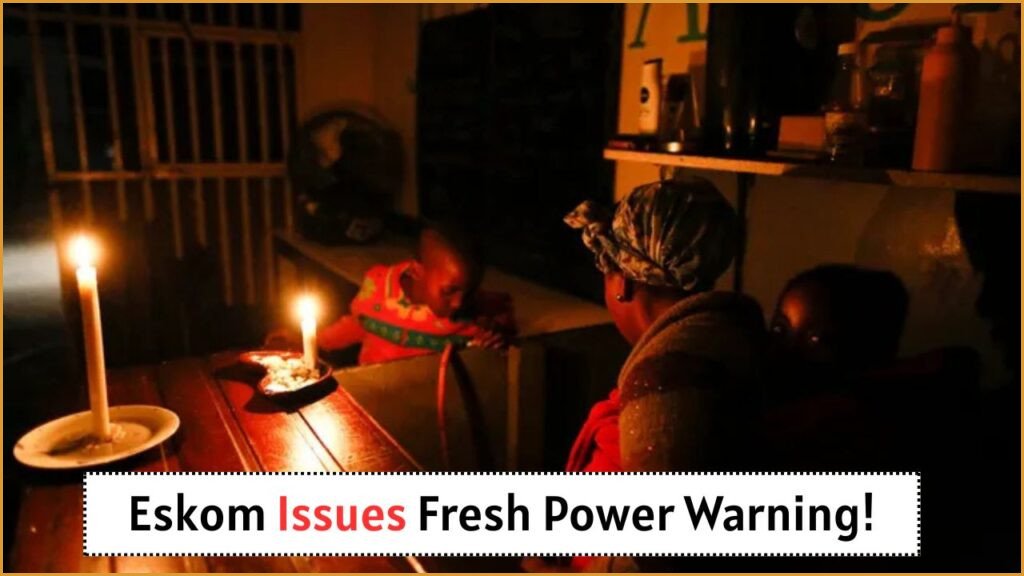Stage 4 Load Shedding Hits: As South Africa navigates through its energy challenges, the announcement of stage 4 load shedding has brought a new wave of disruptions. With the ongoing struggle to balance electricity supply and demand, many regions across the country are preparing for scheduled power outages. These outages not only affect daily life but also have significant implications for businesses and community services. Residents are encouraged to stay informed about the latest load shedding schedules to minimize inconvenience and plan accordingly.
Understanding Stage 4 Load Shedding in South Africa
Stage 4 load shedding in South Africa indicates a high level of electricity demand that cannot be met by the current power supply. This stage involves more frequent and longer-lasting outages compared to lower stages. The situation arises from various factors, including maintenance issues at power stations, unexpected breakdowns, and fuel supply challenges. Eskom, the country’s primary electricity supplier, implements these measures to prevent a total blackout.
- Load shedding schedules are updated daily.
- Areas can experience power cuts multiple times a day.
- Each outage can last up to four hours.
- Residents are encouraged to reduce electricity usage.
- Backup power solutions are recommended for businesses.
Impact on Communities During Load Shedding
The impact of stage 4 load shedding extends beyond individual households, affecting entire communities. Businesses face the challenge of operating without consistent power, leading to potential financial losses. Schools may need to adjust their schedules, and healthcare facilities must rely on generators to ensure patient safety. The ripple effects of these power cuts highlight the importance of community resilience and preparedness.
| Region | Outage Times | Duration | Frequency | Backup Options | Community Response |
|---|---|---|---|---|---|
| Gauteng | 8:00 – 12:00 | 4 hours | 2 times/day | Generators | High |
| Western Cape | 10:00 – 14:00 | 4 hours | 3 times/day | Solar Panels | Moderate |
| KwaZulu-Natal | 12:00 – 16:00 | 4 hours | 2 times/day | Inverters | Low |
| Eastern Cape | 14:00 – 18:00 | 4 hours | 1 time/day | Battery Storage | High |
| Free State | 16:00 – 20:00 | 4 hours | 2 times/day | Renewable Sources | Moderate |
| Limpopo | 18:00 – 22:00 | 4 hours | 1 time/day | Diesel Generators | Low |
Preparing for Scheduled Power Outages
Preparation is key to minimizing the disruption caused by stage 4 load shedding. Residents are advised to keep emergency kits ready, including flashlights, batteries, and non-perishable food items. It’s also essential to charge electronic devices in advance and keep them unplugged during outages to prevent damage from power surges. Additionally, exploring alternative energy sources can provide a long-term solution to frequent power cuts.
- Create a family load shedding plan.
- Install surge protectors on critical devices.
- Invest in energy-efficient appliances.
- Consider installing a home solar system.
- Stay informed through Eskom’s official channels.
Business Strategies During Load Shedding
Businesses must adopt strategies to cope with the challenges posed by load shedding. Investing in backup power systems such as generators or UPS units can ensure continuity of operations. Implementing flexible work hours and remote working policies can help mitigate the impact of power outages on productivity. Furthermore, businesses should regularly communicate with customers about potential disruptions and provide updates on service availability.
- Invest in reliable backup power systems.
- Implement flexible working arrangements.
- Communicate with customers proactively.
- Review and update emergency response plans.
- Optimize energy usage during peak hours.
Regional Load Shedding Schedules
| Province | Stage | Time Slot |
|---|---|---|
| North West | 4 | 6:00 – 10:00 |
| Mpumalanga | 4 | 10:00 – 14:00 |
| Northern Cape | 4 | 14:00 – 18:00 |
| Gauteng | 4 | 18:00 – 22:00 |
| Western Cape | 4 | 22:00 – 2:00 |
| KwaZulu-Natal | 4 | 2:00 – 6:00 |
| Limpopo | 4 | 6:00 – 10:00 |
Alternative Energy Solutions for Households
Exploring alternative energy solutions is becoming increasingly important for South African households. Solar panels are a popular choice, offering a sustainable and cost-effective way to generate electricity. Battery storage systems can complement solar installations by storing excess energy for use during outages. Additionally, small-scale wind turbines and biogas systems are viable options for those seeking to diversify their energy sources.
FAQs About Stage 4 Load Shedding
- What is stage 4 load shedding? Stage 4 load shedding involves more extensive power cuts to manage electricity demand effectively.
- How can I find out my area’s load shedding schedule? You can check Eskom’s website or download the official app for up-to-date schedules.
- What should I do during a load shedding event? Unplug appliances, use backup lighting, and minimize power usage to reduce strain on the grid.
- Are there any financial aids for solar installations? Various government incentives and financing options are available to support solar panel installations.
- Can load shedding affect my appliances? Yes, frequent power cuts can cause damage due to power surges. Using surge protectors is recommended.
South Africa’s Energy Landscape
| Factor | Impact | Solution | Outcome |
|---|---|---|---|
| Infrastructure | Outdated | Modernization | Improved Reliability |
| Renewables | Underutilized | Investment | Increased Capacity |
| Demand | High | Efficiency Programs | Reduced Load |
| Supply | Inconsistent | Alternative Sources | Stability |
| Policy | Lacking | Reform | Better Management |
| Maintenance | Delayed | Regular Checks | Fewer Breakdowns |
Government’s Role in Mitigating Load Shedding
Government intervention is crucial in addressing the root causes of load shedding in South Africa. Policies aimed at infrastructure development, renewable energy investment, and efficient energy management can significantly improve the country’s power situation. Collaborative efforts between public and private sectors are essential to create a sustainable energy future for South African citizens.
How can residents prepare for stage 4 load shedding?
Stock up on essentials and have backup power solutions ready.
What are the dates and areas affected by the latest stage 4 load shedding?
Stay informed through official announcements for accurate details.










